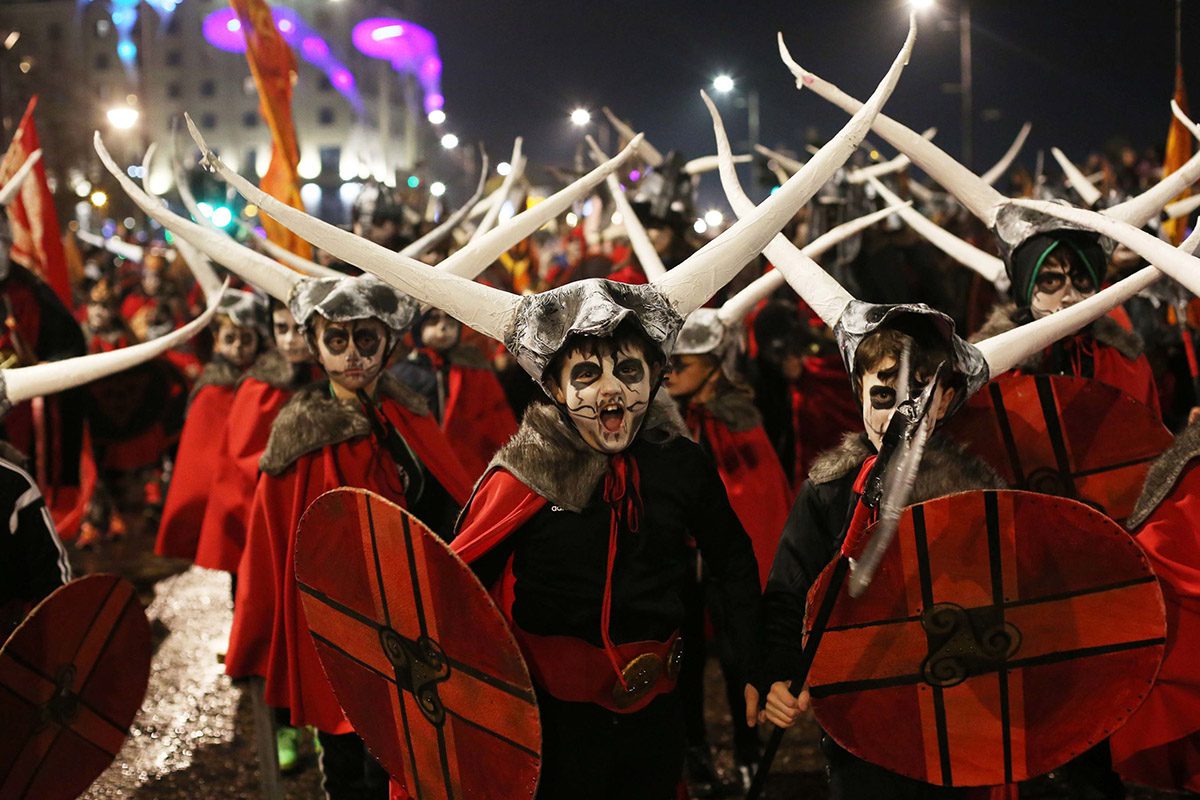How the Irish people held fast to the ancient traditions of Samhain and did a superlative PR job in selling Halloween festival abroad.
Our business is all about telling stories.
That is something that Irish people are supremely gifted at – we are justly renowned the world over for our storytelling skills, it is in our genes. As with many ancient cultures across the world, historically, our culture relied heavily on an oral tradition of passing on stories, history and folklore from generation to generation.
A product of that story-telling tradition is the festival we celebrate on October 31: Hallowe’en or Samhain in the original Irish. It was how the Celtic people celebrated harvest time when many wild fruits and nuts were available.
In addition to celebrating the rich abundance of natural produce, it was also the time of year where we experienced a key change in the calendar – the onset of the long, dark winter.
Relevant Insights
In our modern world with its 24/7 electric light everywhere we don’t really know how much of a change it was for people in distant generations past to face the prospect of the five to six months of very short days and long, cold nights of pitch black darkness that were only alleviated by the conviviality of story-telling with the clan around the campfire.
Life was truly much harder during the winter and, given our cold, damp climate in northern Europe, it was the time that mortality would have been at its highest as the old, weak or sickly would succumb in the long months of winter. And of course in pre-Christian times, they didn’t even have the feast of Christmas in the mid-point of winter to look forward to.
We can see why for the Celts, Samhain marked the passing from light into a long period of darkness and the hope of the return of the light in the distant springtime. It was a magical date in their calendar and many myths were associated with it. The key myth was that on the feast of Samhain, the veil between this world and ‘the other world’ (the world of the dead) disappeared and people who were dead could again walk the earth for one night.

There was a belief that if on the night of Samhain, someone from the other world saw you and recognised you, they could take you with them back to their world. That is where folklorists believe the tradition of ‘dressing up’ for the feast of Samhain is derived – if you were dressed up in disguise, you could not be recognised and thus, could not be taken to the other world.
We all know that even today, kids love a good scary story – can you imagine the effect of such stories told to wide-eyed kids in millennia gone by, sitting around the fire on long, dark and cold nights. That is why Samhain or Hallowe’en was so indelibly marked into our psyche through the centuries. It is why Irish emigrants took their Samhain traditions with them when they went to America and beyond.
When Christianity came to Ireland, the priests tried to dampen down the pagan elements of the celebration by tying it to the Christian feast day ‘All Hallows’ (or All Saints) celebrated on November 1, renaming it as the ‘evening before All Hallows’ or Hallowe’en.
Irish people held fast to the ancient traditions of Samhain and did a superlative PR job in selling their Hallowe’en festival in their new adopted countries. In particular, the Americans lapped it up and, as is their wont, they repackaged the celebration as a ‘trick or treat’, black and orange scare-fest.

If the Irish are great story-tellers, then the Americans are wonderful sales people. The American version of Hallowe’en spawned innumerable Hollywood ‘guts and gore’ blockbusters that helped to bring that version of Hallowe’en across the globe. Now, there is hardly a corner of the globe where you won’t see some class of Hallowe’en decoration at this time of year. But I wonder how many of those global Hallowe’en revellers know that the festival is originally a product of the storytelling skill of the Irish.
Happy Hallowe’en…!

Pearse O’Loughlin, Client Director with Cullen Communications, has more than 20 years of experience across all areas of communication and works principally with clients in the corporate and consumer sectors. One of the most experienced automotive PR professionals in Ireland, Pearse specialises in media relations, event management, internal communications and strategic consultancy.

